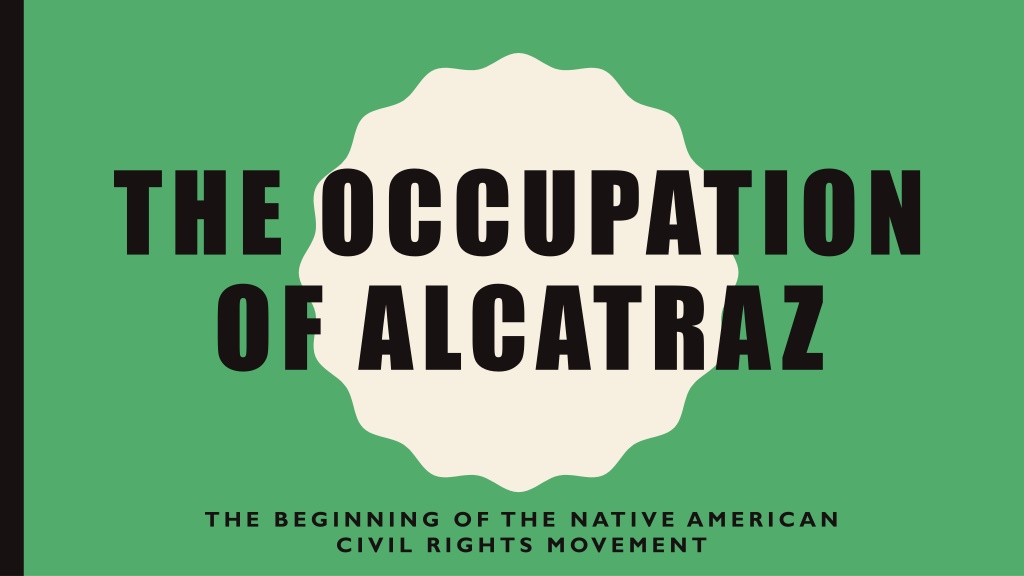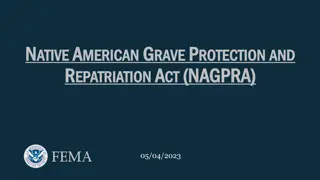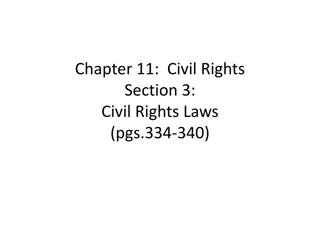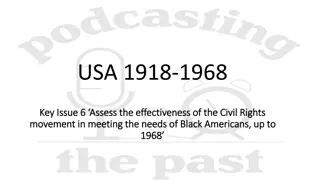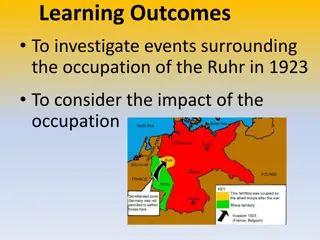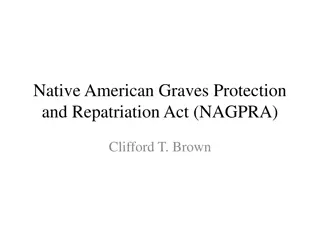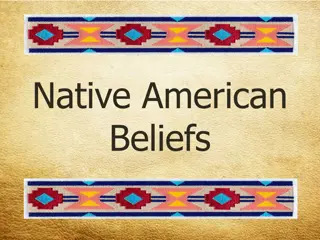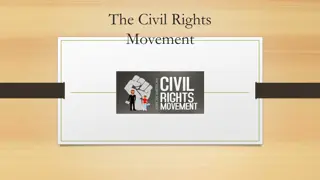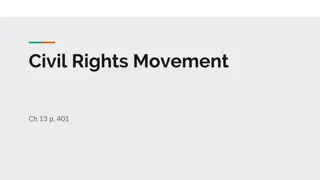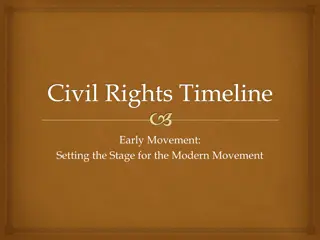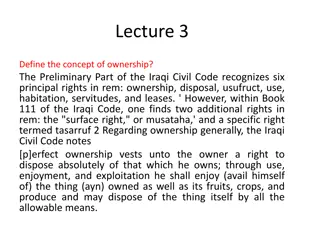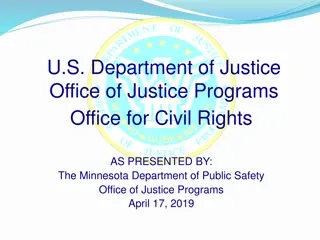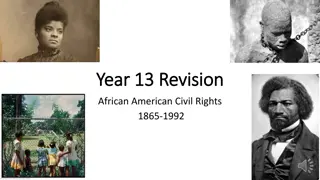The Occupation of Alcatraz and the Native American Civil Rights Movement
The Occupation of Alcatraz marked the beginning of the Native American civil rights movement as tribes fought against forced relocation and government coercion. The Fort Laramie Treaty of 1868, the planned occupation in 1963, and subsequent events on the island illustrate the struggles and activism of Native Americans. Despite legal challenges, the occupation sparked awareness and activism for indigenous rights, showing resilience in the face of adversity.
Download Presentation

Please find below an Image/Link to download the presentation.
The content on the website is provided AS IS for your information and personal use only. It may not be sold, licensed, or shared on other websites without obtaining consent from the author. Download presentation by click this link. If you encounter any issues during the download, it is possible that the publisher has removed the file from their server.
E N D
Presentation Transcript
THE OCCUPATION OF ALCATRAZ THE BEGINNING OF THE NATIVE AMERICAN CIVIL RIGHTS MOVEMENT
TERMINATION AND RELOCATION The Federal Government coerced tribes to dissolve Through the relocation act the government then sent many Native Americans off the reservations to cities Once in these cities they were put in poor housing complexes and as soon as they found a job the government cut off all support. The people in these cities became isolated and were too poor to travel back to their reservations
THE FORT LARAMIE TREATY OF 1868 This treaty gave the Sioux authority over their reservation and also stipulated that unused federal land could be claimed by the Sioux But then gold was discovered in the Black Hills and the government tried to buy them for $5 million The Sioux refused and the government quickly found a way to send in the military This led to the Battle of Little Big Horn where Custer met his demise
PLANNING THE FIRST OCCUPATION In 1963 Alcatraz ceased to be a prison A Sioux woman named Belva Cottier heard that the government didn t know what to do with the island making it surplus land She and her husband and a few others looked over the treaty and did some research finding out that Alcatraz had originally been Indian land They got a lawyer and planned to stake a claim on the island
THE OCCUPATION OF ALCATRAZ 1964 The Sioux sailed out to the island and claimed the island by right of discovery The Sioux then filed a petition for the land An official investigation was conducted to see if the Sioux really had any legal claim to island It was determined that they didn t, ending their claim The commission in charge accepted hundreds of suggestions for what to do with the island
WHAT NEXT? In 1969 it looked like an oil tycoon might buy Alcatraz for commercial use Several activists living in San Francisco organized the symbolic taking of the island A Mohawk Indian named Richard Oakes was a student activist that helped with the planning and most people saw him as the leader Adam Fortunate Eagle arranged for boats to take them out to the island and alerted the media that they would be doing so
